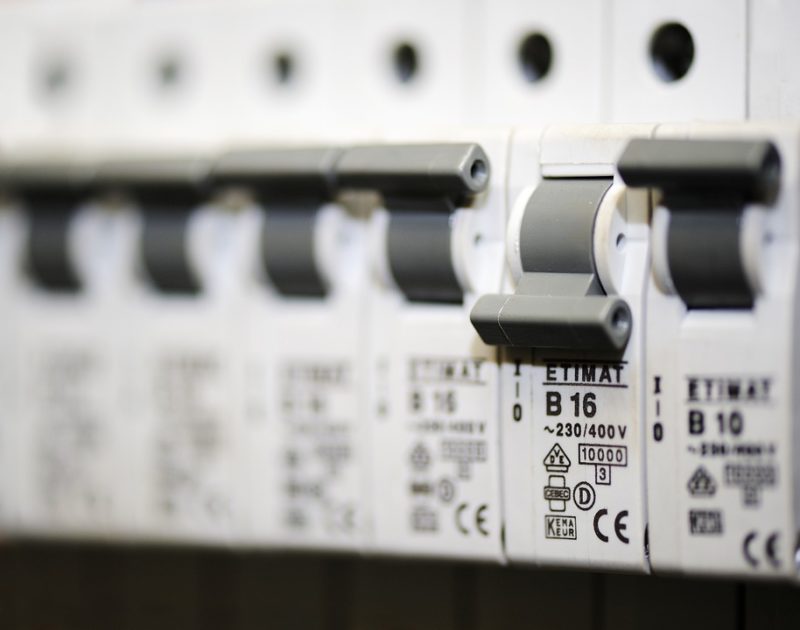Do you know what amp breaker for dryer? A typical amp breaker for a standard dryer would be at least 30 amps. We all seek safety when we use our appliances, especially for the dryer, which is undeniably the most used of them all and the one which uses too much electricity.
The amp breaker or also known as a circuit breaker. An electrical switch protects an electrical circuit from overcurrent/overload or short circuit damage. After protective relays identify a malfunction, its primary job is to halt the electric current.
Knowing what type of amp breaker to use or why to utilize an amp breaker might be a life-saving choice. We all want to feel secure when we use our appliances, and circuit breakers are frequently employed in equipment that requires a large quantity of power to work.
How To Choose The Correct Amp Breaker
So, what amp breaker for dryer? Dryers consume a lot of electricity and require the correct breaker capacity to avoid tripping and unintentional electric accidents in your home. It’s also a good idea to know which amp breaker for the dryer is the greatest. Throughout this sense, the type breaker you choose should be strong enough to resist the operation of the machine. Depending on how much voltage an appliance requires while in use, different breakers may be employed to control it.
Steps To Install Amp Breaker For Dryer
The installation of a circuit breaker is often regarded as the most challenging aspect of residential electrical repair. Most individuals are afraid of being startled if they do it themselves. Installing circuit breakers in most domestic electrical panels, on the other hand, does not have to be risky or difficult.
The following stages should be carried out by a professional. Still, if you have prior experience or are working under the supervision of an electrician, this might be a helpful guide for you. Before we begin the operation, make sure you have the following items; pliers, screwdrivers, electrical tape, flashlights, insulated gloves, and a first-aid kit in case of an accident or mistreatment of instruments.
Step #1. Turn off the power supply
If you’re working with electrical wiring or equipment, be sure the power is turned off, so you don’t get electrocuted. All electronic devices, such as computers, refrigerators, and air conditioners, must be turned off to avoid harm from a power outage.
Step #2. Remove the electrical panel cover
Remove all of the screws with the screwdrivers while gently supporting the panel, so it does not fall to the ground. If you can’t do it alone, ask for help, even if it’s simply to hold the panel in place, because if it’s damaged, it’ll represent a far greater risk and hazard to your safety.
Step #3. Locate a gap between or near existing circuit breakers
You must install the new breaker adjacent to a current circuit breaker. Thoroughly verify this placement to the previously withdrawn cover to ensure it corresponds with a new spot on the surface.
Step #4. Placing the breaker in the panel
The circuit breaker has three settings. ON, OFF, and mid positioned when tripped or activated, and also to safeguard your safety during the installation procedure, turn the handle to the OFF position before installing the breaker.
Step #5. Putting the breaker firmly
Press firmly but gently on the circuit breaker with your thumb until it snaps into place on the bus bar. The breaker is kept in place by spring clips and the panel cover, so you don’t have to screw it in. While seated will necessitate solid uniform pressure, it should not be pushed.
Step #6. Join the circuit wiring together
Attach the white wire and the dark hot wire to the switch after ensuring the fuse box is now in the OFF position. Remove the screw from the breaker’s connection terminal, put the cables into the correct terminal parts, and tighten the screws.
Putting The Final Touches On The Installation
Eliminate any items, wire fragments, or other foreign materials from the panel’s inside that might create a short circuit. Then, confirm that the course is firmly installed at both contact areas and fits and through cover by placing the surface here on the panel. Finally, screw the lid back into place on the forum.
Under the best conditions, electrical parameters as low as 50 volts can be deadly. The majority of home electronic wiring has a value of 2 to 5 times this. When working with circuits, turn off the power and don’t advance if you’re uncertain or uneasy with the instructions above.
Another essential precaution to take for the safety of a building’s circuit breaker panel is to examine and maintain it regularly to verify that all breakers are in excellent working order. Breakers will eventually wear out and need to be replaced. Many problems can be discovered during these examinations, and if caught early enough, further harm can be avoided.
It’s A Wrap!
Now that we have an idea of what amp breaker for dryer and circuits in general approach, we assume that you can now do it on your own and be extremely careful as we also need to value our life and safety when performing the following steps mentioned.
You may also want to read about how to hookup washer and dryer and why is my dryer taking so long to dry.

